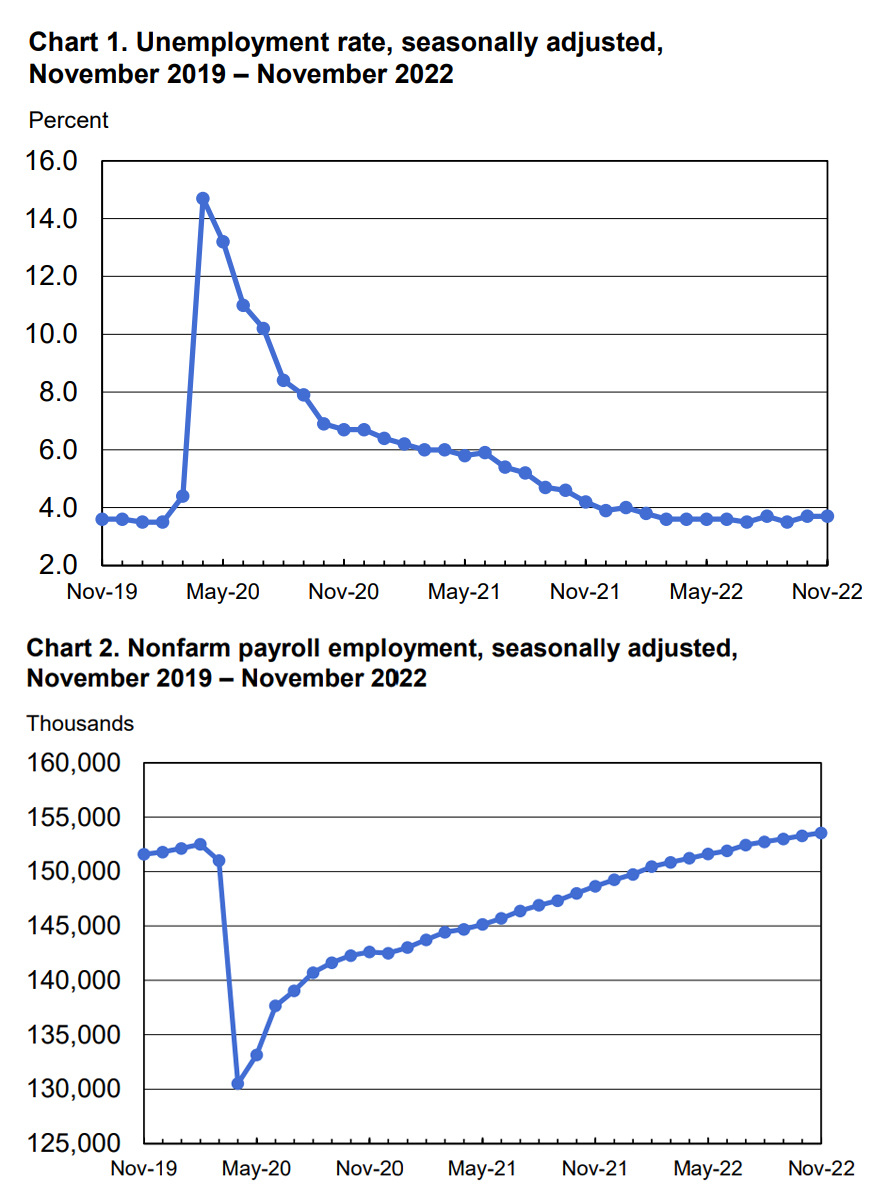The U.S. Bureau of Labor Statistics (BLS) monthly employment report signaled continued resilience in the national labor market. The BLS reported a gain of 263,000 non-farm jobs while unemployment remained unchanged at 3.7 percent.
Among the civilian workforce with a bachelor’s degree and higher (the primary target of MRINetwork’s recruitment efforts) unemployment continued in what can best be described as full employment at 2.0 percent.
 consumer spending, the economy’s main engine.
consumer spending, the economy’s main engine.
With a global Network of over 250 executive recruitment offices, MRINetwork professionals connect leading organizations, from start-ups to multi-national firms, with top talent to drive business growth. Our Network leaders monitor this valuable data monthly and are pleased to provide a summary of this morning’s BLS data with top-line commentary from leading financial experts.
The Wall Street Journal’s Sarah Chaney Cambon provided a succinct summary this morning, “The job market has remained resilient this year, with employers still seeking to hire despite an uncertain economic outlook and elevated recession fears. Low unemployment and wage gains have helped fuel
One big question is how long that strength can last as the Federal Reserve aggressively raises interest rates to tame inflation. Some companies in technology, entertainment and real estate are laying off workers, but demand for workers continues to outpace the number of unemployed people looking for work.”
Despite economic headwinds, demand for highly skilled transformative talent is expected to continue. MRINetwork offices in Europe and Asia as well as the U.S. see demand for talent aligning with data from Germany’s Ifo Economic Institute. “Companies in Germany, Europe’s largest economy, are looking to hire more staff, with a particular rise in demand in the service sector, the Ifo economic institute said on Thursday. Ifo said its employment barometer rose to 99.6 points in November from 97.8 points in October. ‘Against the backdrop of decreasing uncertainty, the number of employees in Germany could continue to rise. However, the shortage of skilled workers will remain a lasting problem,’ it added.”
Total nonfarm payroll employment increased by 263,000 in November, roughly in line with average growth over the prior 3 months (+282,000) and somewhat above analysts’ expectations. Monthly job growth has averaged 392,000 thus far in 2022, compared with 562,000 per month in 2021.
Leisure and hospitality added 88,000 jobs in November, including a gain of 62,000 in food services and drinking places. Employment in leisure and hospitality is below its pre-pandemic February 2020 level by 980,000, or 5.8 percent.
In November, employment in healthcare rose by 45,000, with gains in ambulatory health care services (+23,000), hospitals (+11,000), and nursing and residential care facilities (+10,000).
Employment in the “other services” industry rose by 24,000 and construction employment continued to trend up in November (+20,000), with nonresidential building adding 8,000 jobs.
Employment in information rose by 19,000 in November. Employment in the industry has increased by an average of 14,000 per month thus far this year, in line with the average of 16,000 per month in 2021.
Manufacturing and financial activities employment continued to trend up in November both up +14,000.
Employment in professional and business services was relatively flat in November, increasing by 6,000 jobs. On the downside, retail trade employment declined by 30,000 in November, driven primarily by losses in general merchandise stores (-32,000). Similar declines were seen in transportation and warehousing where jobs declined by 15,000.
Jeff Cox, a reporter for CNBC provided a possible view of the BLS numbers by the Federal Reserve, “The numbers likely will do little to slow a Fed that has been raising interest rates steadily this year to bring down inflation still running near its highest level in more than 40 years. In another blow to the Fed’s anti-inflation efforts, average hourly earnings jumped 0.6% for the month, double the Dow Jones estimate. Wages were up 5.1% on a year-over-year basis, also well above the 4.6% expectation.”


